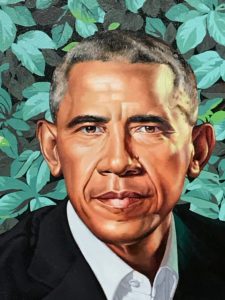 Yesterday I visited the Portrait Gallery in Washington, D.C. The Gallery shares a building (once the Patent Office) with the Smithsonian American Art Museum but because it sits several blocks off the National Mall it is often overlooked by tourists and locals alike. That’s a shame because the two museums house some of the most important and relevant art to our times.
Yesterday I visited the Portrait Gallery in Washington, D.C. The Gallery shares a building (once the Patent Office) with the Smithsonian American Art Museum but because it sits several blocks off the National Mall it is often overlooked by tourists and locals alike. That’s a shame because the two museums house some of the most important and relevant art to our times.
My main focus was the “America’s Presidents” section where they display the official portraits from Washington to Obama. Most paintings are traditional, with dark tones and stoic poses. That is until you get to John F. Kennedy, whose painting is more abstract and modern (especially for 1963).
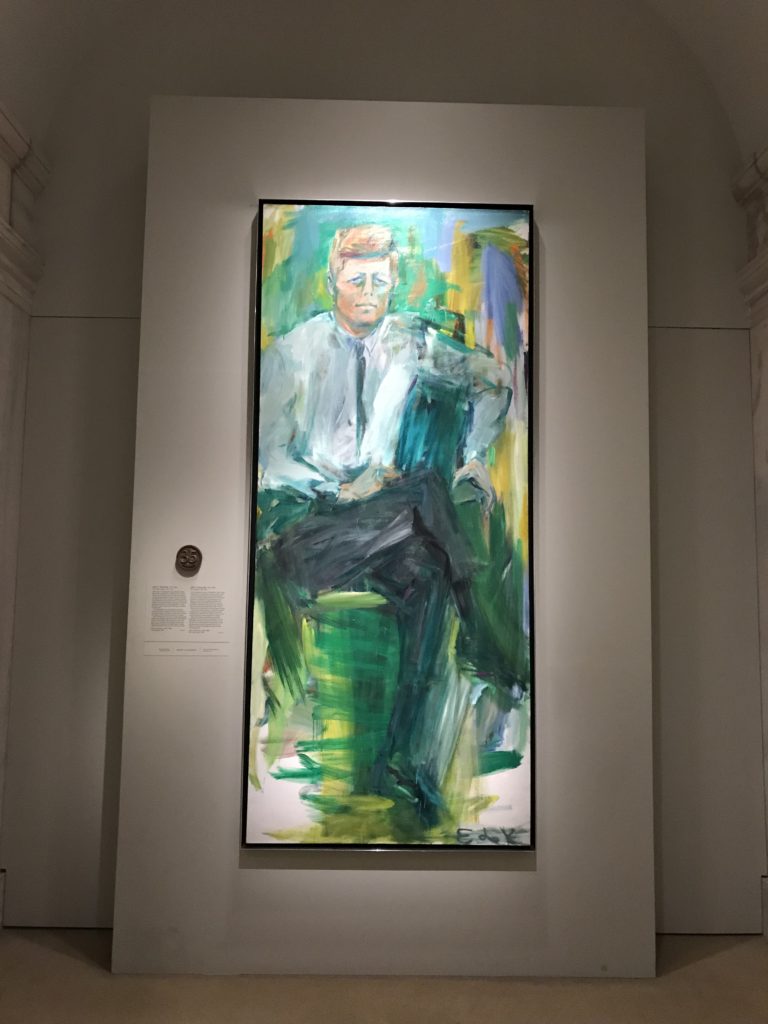
Presidents Carter and Reagan start a more relaxed, but still fully suited up, set of portraits. George H.W. Bush is more austere, but George W. Bush sits tie-less in a more comfortable, homey setting. Bill Clinton is the most unique (okay, bizarre) with his official portrait, which is constructed as a mosaic of small squares with colorful inserts. Looked at from a distance it immediately looks different from the other portraits; up close it is positively peculiar.
But the most interesting was that of President Barack Obama. African-American artist Kehinde Wiley was chosen specifically for his cultural influence. Obama sits tie-less in a classical hardback chair partially embedded in a sea of leaves and flowers. The flowers have personal significance to Obama – chrysanthemums are the official flower of Chicago, the jasmine evokes Hawaii, and the African blue lilies refer to his Kenyan father. The effect is startling, which partially explains why his portrait attracted the largest crowds in the gallery.
From the presidents gallery I moved upstairs to the “Twentieth-Century Americans” hall that holds First Lady Michelle Obama’s official portrait. Michelle selected Amy Sherald, another African-American artist, whose unique style brings out Michelle’s blend of confidence and approachability. As with her husband, Michelle’s portrait was the star of the room.
Also in the “Twentieth-Century Americans” gallery were several other portraits of contemporaries one might not expect to see in a national gallery, including rapper/actor LL Cool J, Vietnam Wall creator Maya Lin (as a 3-D printed mini-statue), and to my surprise, ecologist E.O Wilson, an icon in my scientific field.
There is much more to see in the Portrait Gallery and the Smithsonian American Art Museum, so next time you’re in Washington, DC, pull yourself off the Mall and have a visit. Not far away are also the Spy Museum, Madame Tussaud’s wax museum, and Ford’s Theatre (where Lincoln was shot). All are worth a visit but so often missed by visitors who don’t stray far from the strip of Smithsonian museums between the Capitol and Washington Monument.
David J. Kent is an avid science traveler and the author of Lincoln: The Man Who Saved America, in Barnes and Noble stores now. His previous books include Tesla: The Wizard of Electricity (2013) and Edison: The Inventor of the Modern World (2016) and two e-books: Nikola Tesla: Renewable Energy Ahead of Its Time and Abraham Lincoln and Nikola Tesla: Connected by Fate.
Check out my Goodreads author page. While you’re at it, “Like” my Facebook author page for more updates!



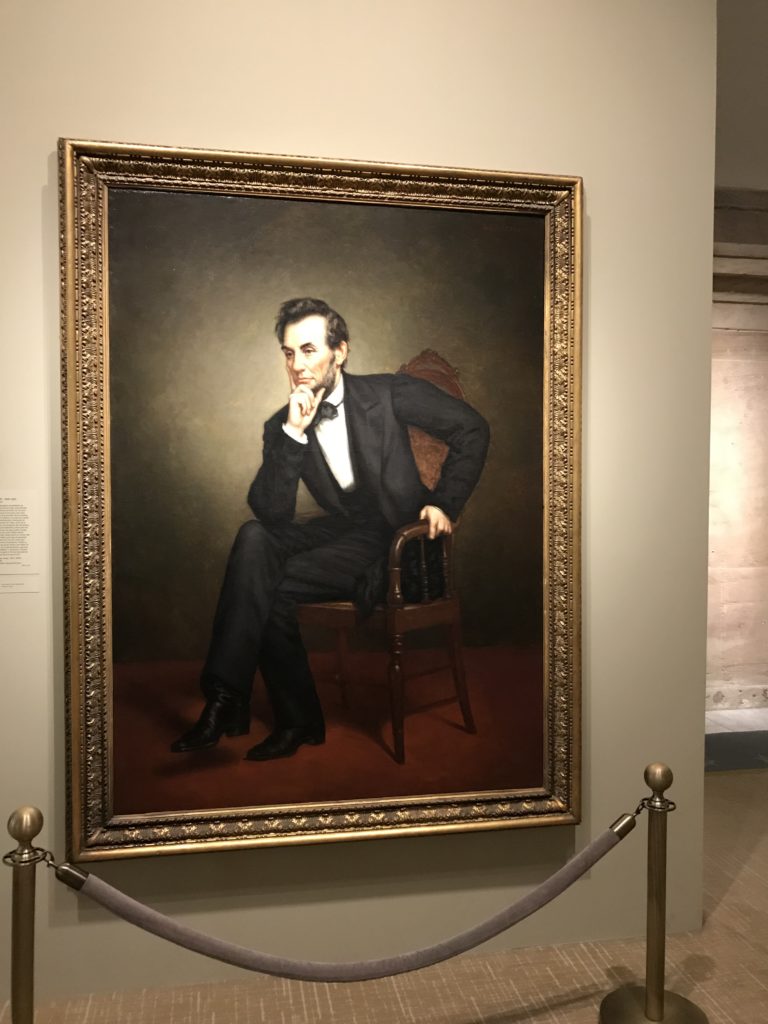



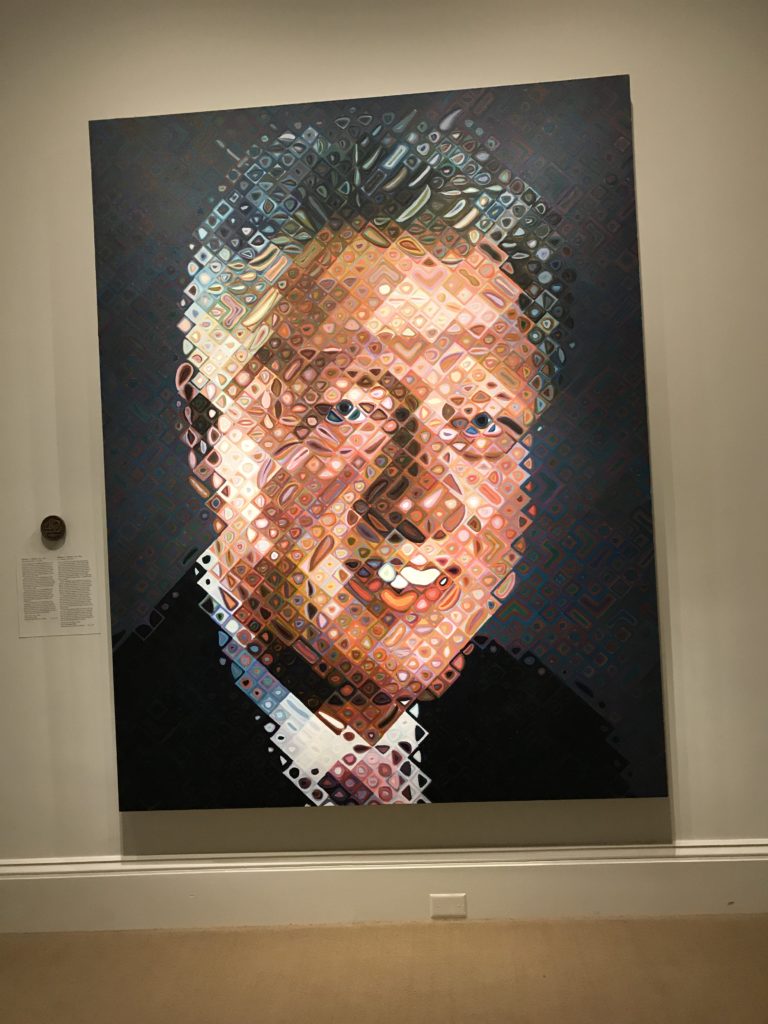
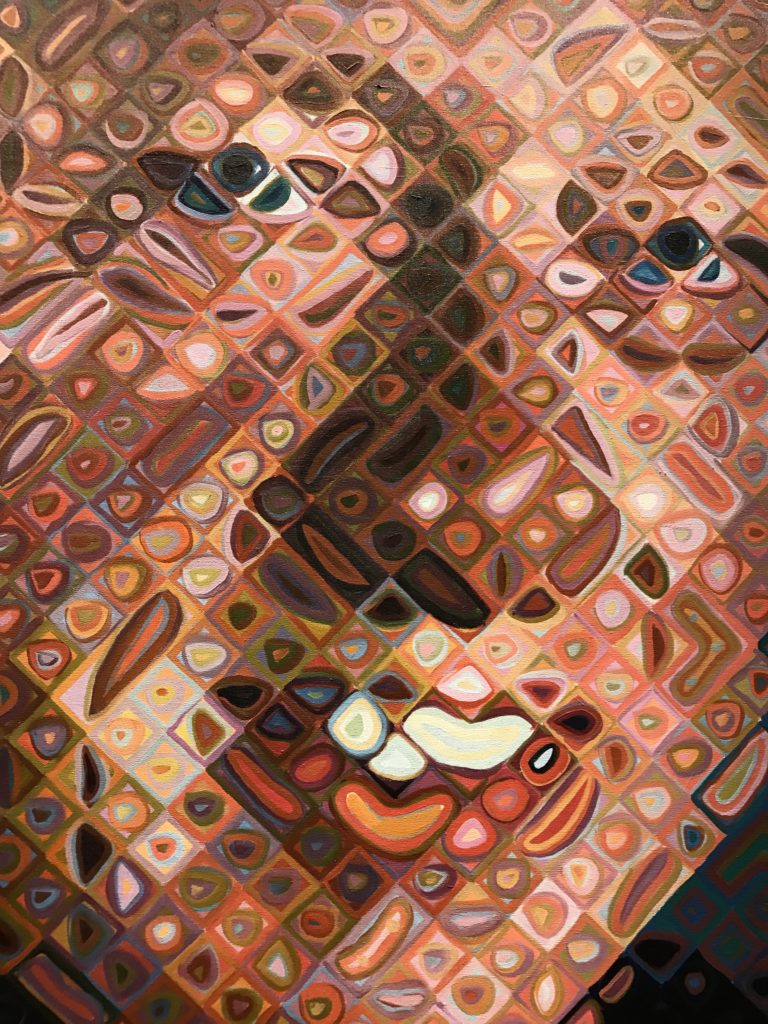
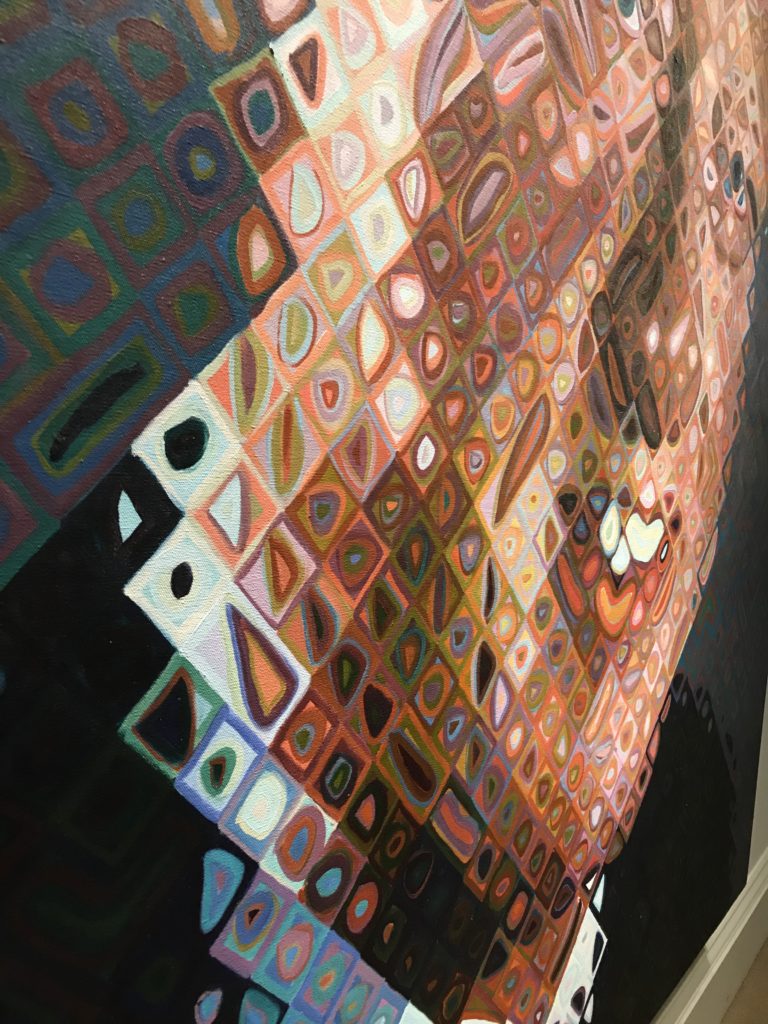
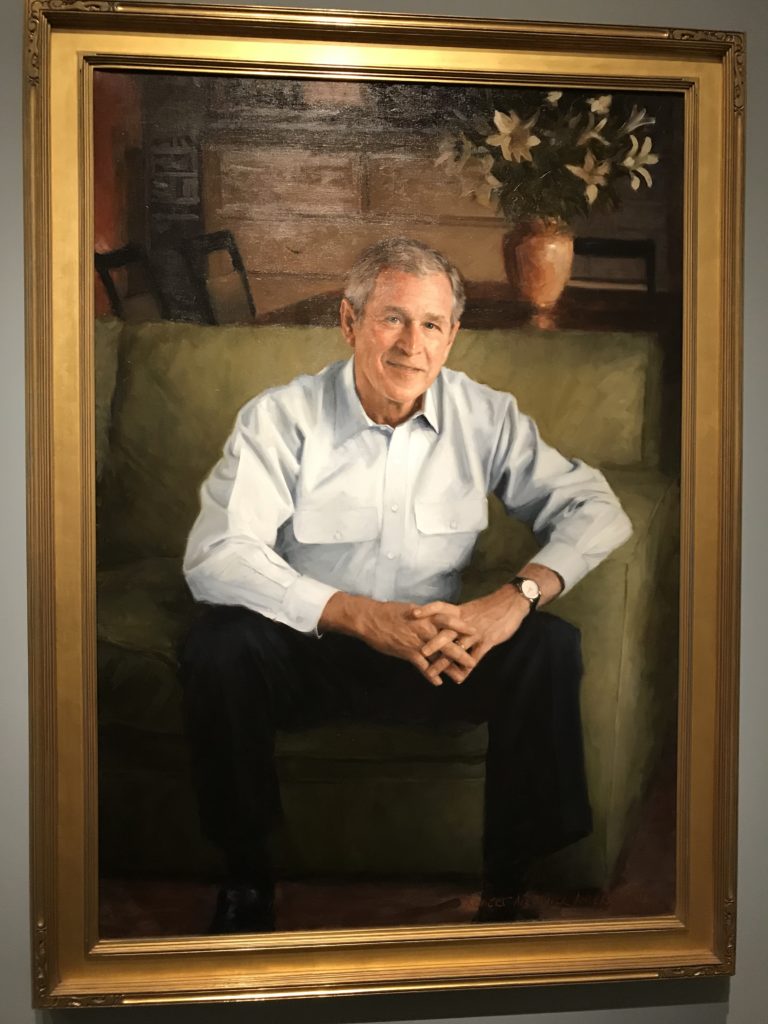

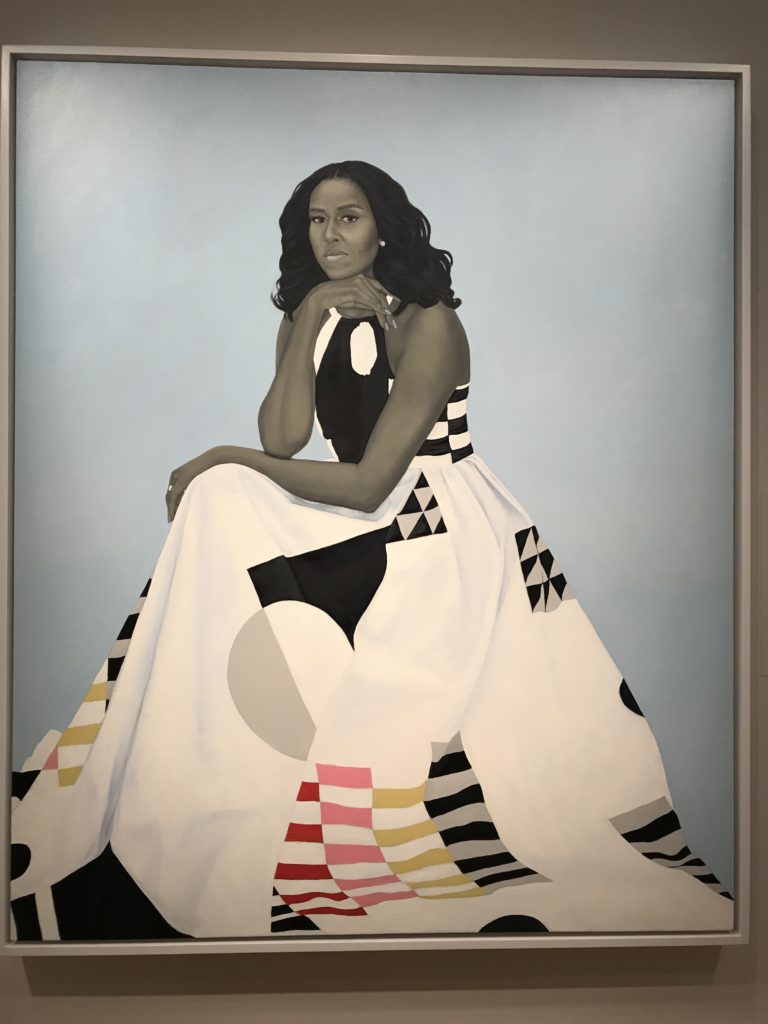
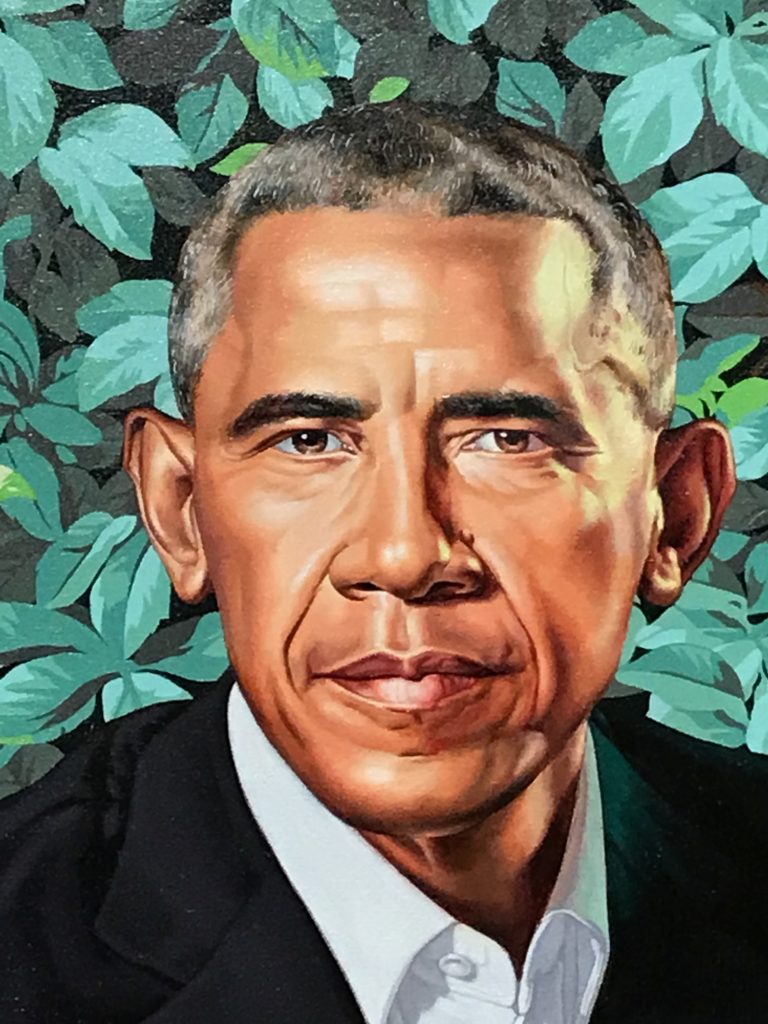










Great post. I need to go see these… 🙂
Yes, you do! 🙂
Very interesting… Beyond the subjective of aesthetic, it’s quite interesting to consider the portraits as representative of their times, both culturally and in terms of the perception of the office… as well as the office holder. I also think these portraits offer rare glimpses into the humanity of people perceived to live such otherwise rarefied lives.
I’m sure that’s true. “W” Bush’s persona was one of down home Texas folksiness (despite being born in Connecticut with a long-handled silver spoon in his mouth). His portrait reflects that. I’m not sure what to say about Clinton’s portrait but in a way it’s perfect for him. The Obama’s clearly saw their influence on black Americans (and many white Americans) and made a point to promote African-American artists and style.
I noted that Nixon’s portrait was rather small compared to the others. He was painted by Norman Rockwell, who intentionally flattered Nixon and his looks, perhaps to give a sense of redeeming qualities. I don’t envy the next artist.
This article caused me to look at all of the Portrait Gallery’s Presidential Portraits as well as the White House Presidential Portraits. I guess there’s some overlap. With the White House, earlier ones seem to vary between Baroque-style facial aspects, and whole body images also containing symbolisms (Washington’s torch table-leg, John Quincy Adams’ nature yielding to his derriere, Zachary Taylor’s sword, Millard Filmore’s finger on the Constitution…) I like Eisenhower’s… he looks like he’s actually ready to listen to what you have to say!
The Portrait Gallery’s images are all over the place, with much apparently representing the culture of the time. I think I’ll hold any aesthetic opinions, though I do like the statement made by Lincoln’s thoughtful posture. As for the next PG Presidential Portrait, easy! It can be the first ever “fake” portrait… just Photoshop it onto Vladimir Putin’s shirtless body.
There does seem to be some overlap. Based on your comments I’ll have to take a closer look at each of the paintings. It’s interesting that Obama’s portrait is a photograph; maybe his official WH portrait hasn’t been revealed?
I always liked that “thoughtful posture” of Lincoln.
And sigh, we might as well follow your photoshop idea.
Pingback: Lincoln Visits the Patent Office – David J. Kent